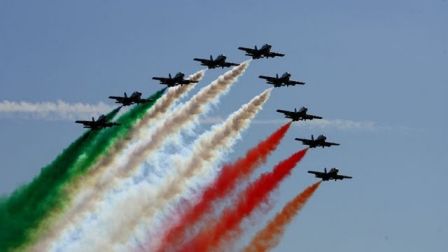
The Delta class (Project 667B "Murena", Project 667BD "Murena-M", Project 667BDR "Kalmar", Project 667BDRM "Delfin") are a common name of four types of submarines which formed the backbone of the Soviet and Russian strategic submarine fleet since its introduction in 1973. They carry nuclear ballistic missiles of the R-29 Vysota family, with the Delta I, II, III and IV carrying the R-29 (NATO reporting name: SS-N-8 'Sawfly'), R-29D (SS-N-8 'Sawfly'), R-29R (SS-N-18 'Stingray') and R-29RM (SS-N-23 'Skiff') respectively. The Delta I carried 12 missiles, the Delta II was a "stretched" Delta I that could carry 16 missiles; the Delta III and IV carry 16 missiles with multiple warheads and have improved electronics and noise reduction.
The R-27 Zyb missile carried by the Project 667s of the late 1960s had a range of just 2,500--3,000 km or 1,600--1,900 mi, so the earlier subs were forced to patrol close to the North American coast, whereas the Deltas could launch the more 7,700 km or 4,780 mi -range R-29s from the relative safety of the Arctic Ocean. In turn the Deltas were superseded by the larger Typhoon class submarines. The early Deltas remained in service until 1990s with treaties such as START I. High running costs and the retirement of the Typhoons′ R-39 missiles meant that some Delta III's were reactivated in the 2000s to replace the Typhoons.
As of December 2010, Pavel Podvig and russianforces.org estimated the strength of the Russian strategic submarine fleet at one Typhoon class submarine (used to test the R-30 Bulava missile), four Delta III, and six Delta IV class submarines, and one Borei. They will ultimately be replaced by the new Borei class submarines (also known as the Dolgorukiy class). Five Delta IV boats have been overhauled in recent years, with work continuing on the last one

:50

:53

:36

:50

:46

:42

:42

:27